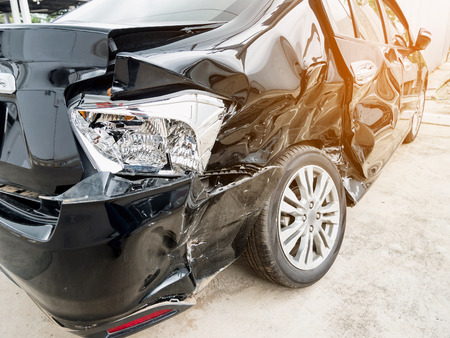1. Introduction to Uninsured Motorist Coverage
Uninsured motorist (UM) coverage is an essential part of auto insurance that helps protect drivers in cases where they are involved in an accident caused by a driver who doesn’t have insurance. Since auto insurance is required by law in most states, it may come as a surprise that many drivers still operate vehicles without proper coverage. This creates a financial risk for responsible drivers who follow the law.
What Is Uninsured Motorist Coverage?
Uninsured motorist coverage is designed to cover medical expenses, lost wages, and other damages if you are hit by a driver who does not have insurance. In some cases, it may also cover damages caused by a hit-and-run driver. Without UM coverage, you could be stuck paying these costs out of your own pocket, even if the accident was not your fault.
Why Is Uninsured Motorist Coverage Important?
Although most states require drivers to carry auto insurance, not all drivers comply with this law. According to data from the Insurance Research Council (IRC), almost 13% of drivers in the U.S. were uninsured as of recent reports. This means that more than one in eight drivers on the road may not have the necessary coverage to pay for damages if they cause an accident.
Key Benefits of Uninsured Motorist Coverage
- Protects against uninsured drivers: Covers your medical expenses and damages if hit by an uninsured driver.
- May cover hit-and-run accidents: In some cases, this coverage applies if an unidentified driver causes an accident and leaves the scene.
- Provides financial security: Helps prevent out-of-pocket expenses related to accidents caused by uninsured drivers.
How Common Is Driving Without Insurance?
| State | Estimated Percentage of Uninsured Drivers |
|---|---|
| Mississippi | 29.4% |
| Michigan | 25.5% |
| California | 16.6% |
| Texas | 8.3% |
As shown in the table above, uninsured drivers are more common in some states than others. This makes uninsured motorist coverage even more critical for drivers in states with a higher percentage of uninsured motorists.
2. States Where Uninsured Motorist Coverage Is Mandatory
Uninsured motorist (UM) coverage is required in some U.S. states to protect drivers from financial loss if they are involved in an accident with an uninsured driver. These mandates exist to reduce the burden of medical expenses and vehicle repair costs that can arise from such incidents. Below is a list of states where UM coverage is required by law, along with the reasoning behind these mandates.
List of States That Require Uninsured Motorist Coverage
The following states have laws mandating uninsured motorist coverage as part of an auto insurance policy:
| State | Minimum UM Coverage Requirements |
|---|---|
| Connecticut | Same as liability minimums |
| Illinois | $25,000 per person / $50,000 per accident |
| Kansas | $25,000 per person / $50,000 per accident |
| Maine | $50,000 per person / $100,000 per accident |
| Maryland | $30,000 per person / $60,000 per accident |
| Massachusetts | $20,000 per person / $40,000 per accident |
| Missouri | $25,000 per person / $50,000 per accident |
| New York | $25,000 per person / $50,000 per accident |
| North Carolina | $30,000 per person / $60,000 per accident |
| South Carolina | $25,000 per person / $50,000 per accident |
| Virginia | $25,000 per person / $50,000 per accident |
| West Virginia | $25,000 per person / $50,000 per accident |
Why These States Mandate Uninsured Motorist Coverage
There are several reasons why these states require uninsured motorist coverage:
Protecting Drivers from Uninsured Motorists
Some drivers fail to carry the required liability insurance, leaving others at financial risk in an accident. By making UM coverage mandatory, states ensure that drivers have protection even if they are hit by an uninsured vehicle.
Reducing Financial Burden on Accident Victims
Without UM coverage, injured drivers and passengers might have to pay for their own medical expenses or sue the at-fault driver, which can be time-consuming and costly. Mandatory UM coverage helps accident victims get compensated more quickly.
Lowering the Risk to Insurance Companies
By requiring UM coverage, states stabilize the insurance market. More insured drivers reduce the number of uninsured claims, which helps insurers keep premiums more predictable and manageable.
Encouraging Responsible Driving
States use mandatory UM coverage laws to incentivize drivers to carry proper insurance. This measure discourages risky driving behavior and helps maintain a more responsible driving population.
These mandates are designed to provide essential financial protection for drivers and passengers, ensuring that unexpected accidents do not lead to devastating out-of-pocket expenses.
![]()
3. States Where Uninsured Motorist Coverage Is Optional
In many U.S. states, uninsured motorist (UM) coverage is optional rather than required by law. This means that drivers can choose whether or not they want to add it to their auto insurance policies. While this may seem like an opportunity to save money, there are significant risks associated with not having this coverage.
Understanding Optional UM Coverage
Some states allow drivers to make their own decisions regarding UM coverage. This means that while insurers must offer it, drivers are free to decline it in writing. However, opting out of UM coverage could leave you paying out-of-pocket if youre hit by an uninsured or underinsured driver.
States Where UM Coverage Is Optional
The following table lists a few states where uninsured motorist coverage is optional:
| State | Uninsured Motorist Coverage Requirement |
|---|---|
| California | Optional |
| Texas | Optional |
| Florida | Optional |
| Pennsylvania | Optional |
| Georgia | Optional |
Potential Risks of Not Having UM Coverage
Choosing not to have UM coverage can leave you financially vulnerable in case of an accident involving an uninsured or underinsured driver. Here are some risks:
Paying for Medical Bills Yourself
If youre injured in a crash caused by an uninsured driver, you may have to pay out of pocket for your medical expenses unless you have health insurance that covers your injuries.
Covering Vehicle Repairs on Your Own
Without UM property damage coverage, you may be responsible for repairing or replacing your vehicle after an accident if the other driver lacks insurance.
Legal and Financial Headaches
Taking legal action against an uninsured driver can be time-consuming and expensive, with no guarantee that youll recover your losses.
Should You Opt for UM Coverage?
While UM coverage may not be required in some states, its often a wise choice to protect yourself from unexpected financial burdens. Insurance experts recommend considering UM coverage, especially in states with high rates of uninsured drivers.
4. Coverage Limits and Variations by State
Uninsured motorist (UM) coverage rules vary significantly across different U.S. states. Some states require drivers to carry UM coverage, while others make it optional. Additionally, coverage limits and regulations differ depending on state laws. Understanding these variations can help you determine the best level of protection for your needs.
States Where UM Coverage is Mandatory
In certain states, uninsured motorist coverage is required by law. This ensures that drivers have some level of protection if they are involved in an accident with an uninsured driver. The states that mandate UM coverage typically set minimum limits that policyholders must carry.
| State | Minimum UM Coverage (Per Person/Per Accident) |
|---|---|
| Connecticut | $25,000 / $50,000 |
| Illinois | $25,000 / $50,000 |
| Maryland | $30,000 / $60,000 |
| New York | $25,000 / $50,000 |
| North Carolina | $30,000 / $60,000 |
States Where UM Coverage is Optional
In many states, uninsured motorist coverage is not legally required, but insurers must offer it as an option. Drivers can choose to add UM coverage to their policy or decline it. Choosing to carry UM coverage voluntarily can provide financial protection in case of an accident with an uninsured or underinsured driver.
Benefits of Choosing UM Coverage
- Protects you from financial liability in accidents caused by uninsured drivers.
- Can help cover medical expenses and lost wages.
- Often includes coverage for hit-and-run accidents.
Variations in UM Coverage Limits
The limits set for UM coverage can differ by state. Some states allow drivers to carry coverage that matches their liability limits, while others have specific requirements.
Stacking vs. Non-Stacking
Some states allow “stacking,” where policyholders with multiple vehicles can combine their UM coverage limits. This provides additional coverage if needed. Other states prohibit stacking, meaning policy limits apply only to a single vehicle.
Understanding Your State’s Requirements
Since UM coverage laws vary, it’s essential to review your states specific requirements. Checking with your insurance provider or state department of motor vehicles can help ensure you have the right level of protection based on local regulations.
5. How to Determine If You Need Uninsured Motorist Coverage
Deciding whether to purchase uninsured motorist (UM) coverage depends on several factors, including state requirements and your personal risk tolerance. Below are key considerations to help you determine if this coverage is necessary for you.
State Laws and Requirements
Different states have different laws regarding uninsured motorist coverage. Some states require it, while others make it optional. Checking your state’s insurance laws can help guide your decision.
| State | Is UM Coverage Required? | Minimum Coverage Amount |
|---|---|---|
| New York | Yes | $25,000 per person / $50,000 per accident |
| California | No | Optional |
| Illinois | Yes | $25,000 per person / $50,000 per accident |
| Texas | No | Optional |
Number of Uninsured Drivers in Your State
Some states have a high number of uninsured drivers, which increases the risk of being in an accident with someone who lacks coverage. If you live in a state with a high uninsured driver rate, purchasing UM coverage is often a smart decision.
Your Personal Financial Situation
If you don’t have the financial resources to cover medical bills or vehicle repairs in the event of an accident with an uninsured driver, UM coverage can provide valuable financial protection.
Health Insurance Coverage
Consider what your health insurance covers. If you have a robust health plan that covers accident-related medical expenses, you may need less UM coverage. However, if your health insurance has high deductibles and limited coverage, UM coverage can help fill in those gaps.
The Cost of Adding UM Coverage
The cost of UM coverage varies by state and insurer. Its important to compare quotes and weigh the cost against the financial risks of an accident with an uninsured driver.
How You Use Your Vehicle
If you drive frequently, particularly in high-traffic areas or regions with many uninsured drivers, the risk of an accident increases. In such cases, having UM coverage can provide extra peace of mind.


